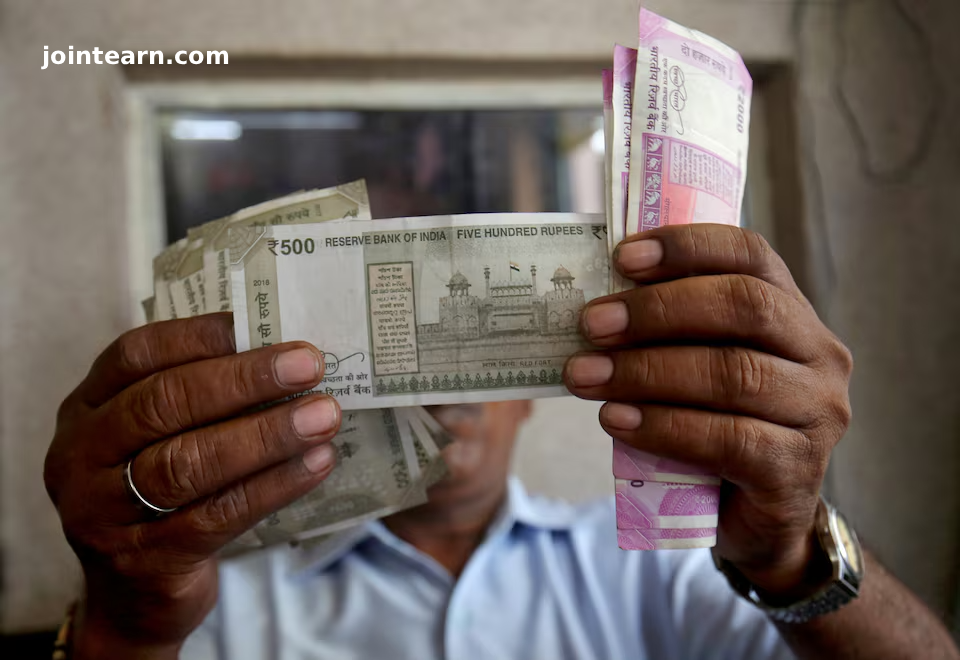
Rupee Trades in Tight Range Amid Mixed Market Forces
MUMBAI, October 23, 2025 — The Indian rupee remained trapped in a narrow trading range on Thursday, as foreign equity inflows and dollar-selling by state-run banks balanced out importer hedging demand for the U.S. dollar. The local currency eventually closed marginally higher, continuing its recent pattern of cautious stability.
The rupee opened stronger at ₹87.8325 per U.S. dollar, supported by reports that Washington may cut tariffs on Indian imports to 15–16% from 50%, a potential boost for India’s export competitiveness. However, early optimism faded as importers rushed to hedge their dollar exposure, pulling the currency down to an intraday low of ₹87.96, before rebounding to close at ₹87.84, slightly stronger than Monday’s ₹87.9275 close.
RBI Seen Actively Defending the 88-Level
Traders said the Reserve Bank of India (RBI) continues to defend the 88-per-dollar mark, intervening via state-run banks to prevent excessive rupee depreciation.
“Everyone knows 88 is the key psychological level,” said a trader at a state-owned bank. “Whenever the rupee gets close, the RBI makes its presence felt through spot dollar sales.”
Market participants added that the RBI’s recent interventions have successfully capped volatility and kept the rupee range-bound despite a strong dollar index and global uncertainty.
Analysts at Barclays Bank, led by Mitul Kotecha, said in a note that they expect further limited RBI intervention:
“We do not rule out additional dollar-selling intervention in the coming days. However, unless the rupee weakens sharply toward 89–90 per dollar, such action is likely to remain measured.”
Foreign Inflows and Holiday Catch-Up Trading
The session also saw foreign portfolio inflows into Indian equities, providing support to the currency. Indian financial markets reopened after a two-day Diwali break on Tuesday and Wednesday, prompting catch-up trades and increased positioning in both the spot and derivatives segments.
Meanwhile, global investors remain cautious as U.S.-China trade tensions intensify. A Reuters report said that U.S. President Donald Trump is considering new curbs on software-enabled exports to China — including laptops, aircraft systems, and jet engines — in retaliation for Beijing’s rare earth restrictions. The development has pressured Asian currencies, though the RBI’s steady hand has helped shield the rupee from broader regional weakness.
Outlook: Rupee Expected to Stay Range-Bound
Forex strategists expect the USD/INR pair to remain confined between 87.70 and 88.00 in the near term, with the RBI likely to intervene selectively to manage volatility. Traders are also keeping an eye on U.S. inflation data and global risk sentiment, both of which could influence emerging-market currency flows.
“While equity inflows continue to support the rupee, persistent importer hedging and a firm dollar globally limit upside momentum,” said one Mumbai-based dealer. “For now, 88 remains the RBI’s red line.”


Leave a Reply